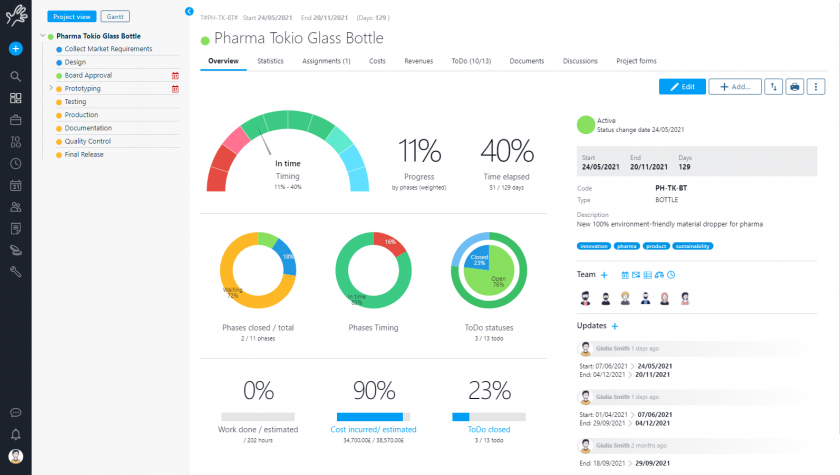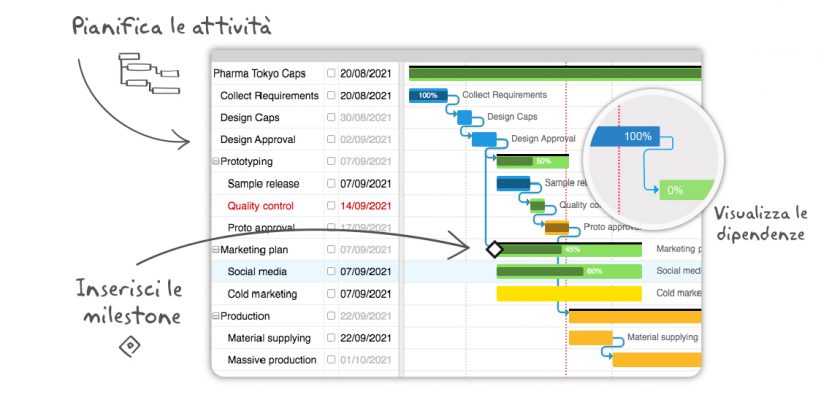Ensuring the final outputs of the project, can become challenging for a project manager, especially considering the many moving parts during the life cycle of a project and the many people involved.
CONTENT
Therefore, project managers must stay one step ahead of the game, and in this article, we’ll look at what factors go into getting the best deliverables in a project.
What is a project output?
A project output, also called a deliverable, is a specific product or outcome that has been “promised” to a person, company, or department.
A product can be tangible, such as a website or electronic device, but it can also be intangible, as in the case of information or expertise.
In other words, project output needs to be delivered to someone at the end of a project.
Any promise from one party to the other must contain some sort of delivery for both parties to be satisfied with their agreement.
Factors for getting the most out of final project outputs
Below are some key factors that make project management efficient and effective and, as a result, ensure the best in the final output.
1. Define outputs
To provide what is expected, you must first define exactly what the expectation is.
What should the finished output be? If it is a physical product, what materials should be used? If it is information, what criteria should it be based on?
Defining the answers to these and other questions first – depending on the project – and getting confirmation on them will help to have a clear definition of what the deliverable should be.
2. Involve stakeholders
Stakeholders are typically the people who will provide a party you need to deliver the project results as required.
This includes funds, personnel, materials, office space, storage, machinery, and any other resources needed to get the job done.
That’s why it’s a good idea to involve them as much as possible in the process and throughout the project lifecycle.
Involving stakeholders allows them to help shape the project so that it can deliver what is required.
It’s much easier for them to agree to provide what you need if they understand why it’s crucial to the project’s success.
3. Assign tasks and responsibilities
Any project that includes contain sub-projects that must be completed for the overall final project management results to be successfully completed.
The key here is to identify the team members with the best skills and most qualified to complete specific tasks.
It’s important to let people know what their responsibilities are and assign them correctly, not so much to blame if something goes wrong but to know who to turn to when needed.
Assigning responsibilities will also allow the rest of the team to know who they need to contact in the event of a problem.
When everyone knows what is expected of them and others around them, it becomes much easier for individuals to come together to collaborate as a team and, as a result, generate better outputs.
4. Use project management software
Many components of a project can be very complex without the help of good project management software like Twproject.
With this, you can create interactive charts and graphs that help people visualize the processes involved, making it easier to know what is planned and when.

In addition, project management software is helpful when it comes to visualizing and planning workflow, setting realistic goals, and identifying potential flaws in the plan.
5. Set deadlines

Before proceeding with a project, it is necessary to clarify when the project’s output is expected to be finalized.
In addition, it is crucial to determine deadlines for activities within the process, identifying what is known as milestones.
All deadlines need to be reasonable: putting too much pressure on team members ould be counterproductive, hurting the chances of getting successful output on time.
With Twproject you can set all this information easily having everything under control.
6. Consider potential obstacles and risks
No matter how efficient a project manager may be and how well-structured the project plan may be, potential external factors can always arise and affect the project in a negative way.
For example, material suppliers may be late or even fail to deliver, causing the project to halt temporarily.
In general, there’s not much you can do to correct external problems for which you’re not responsible, but that doesn’t mean you’re unprepared to overcome any obstacles that might arise.
This could be having contingency plans in place to have an alternate source of materials if needed.
7. Continuous review of work in progress
As the project progresses, the project manager mustn’t be passive but should check, and if necessary, revise and re-approve the following steps in the process to make sure they meet expectations.
In this way, you can prevent potential obstacles, not all but many, before they occur. As the famous saying goes, “It’s better to be safe than sorry,” and this is true in project management as well.
Ultimately, having a good project plan is the key to getting the best out of the final outputs of a project.
Knowing from the outset what is expected from the final results is an excellent way to avoid ambiguity and later mistakes.
Good preparation is undoubtedly a significant investment of time and effort. However, if done correctly, the chances of successful final project outputs will be much higher.




